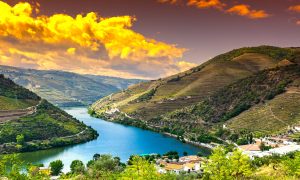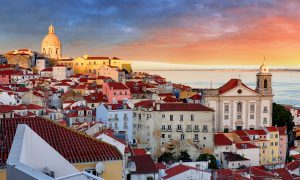Cobblestones in Portugal: A Journey Through History and Culture
Portugal, a country known for its rich history, vibrant culture, and stunning landscapes, has a unique feature that often goes unnoticed by the casual observer – its cobblestone pavements. These intricate mosaics of stone, known as ‘calçada Portuguesa,’ are an integral part of Portugal’s cultural heritage and a testament to its historical legacy. This article will take you on a journey through the history and facts about these cobblestones, which are as much a part of Portugal’s identity as its famous Port wine or Fado music.
The history of cobblestones in Portugal dates back to the Roman Empire when the Romans used this technique to build their roads and infrastructure. However, the art of cobblestone paving as we know it today began in the 19th century. The first known use of this style was in 1842 when the Castelo de São Jorge in Lisbon was paved with cobblestones. This was followed by the Rossio Square in 1848, which is still one of the most impressive examples of cobblestone artistry in Portugal.
The cobblestones used in Portugal are usually made from basalt and limestone, materials readily available in the country. The darker stones are basalt, while the lighter ones are limestone. These stones are hand-cut into small cubes and then meticulously arranged by skilled craftsmen known as ‘calceteiros.’ The calceteiros follow intricate designs to create beautiful patterns and images on the streets and squares of Portugal.
One of the most iconic designs is the ‘onda,’ or wave pattern, which is commonly seen on the streets of Lisbon. This design was inspired by the city’s close connection with the sea and is a testament to Portugal’s maritime history. Other popular designs include geometric patterns, floral motifs, and even depictions of historical events or figures.
The cobblestone pavements are not just aesthetically pleasing; they also have practical benefits. The stones are durable and can withstand heavy traffic and harsh weather conditions. They also provide a natural drainage system, as the gaps between the stones allow water to seep into the ground, reducing the risk of flooding.
However, maintaining these cobblestone streets is a labor-intensive process. The stones can become loose over time and need to be regularly repaired or replaced. This work is carried out by the calceteiros, who continue to use traditional methods and tools. Despite the challenges, the Portuguese government recognizes the cultural value of these cobblestones and has implemented measures to preserve and protect this unique heritage.
In recent years, there has been a growing appreciation for the art of cobblestone paving. The craft is now recognized as an Intangible Cultural Heritage in Portugal, and there are efforts to promote it internationally. There are also training programs for aspiring calceteiros, ensuring that this traditional craft continues to thrive.
The cobblestones of Portugal are more than just a practical solution for paving streets; they are a symbol of the country’s history and culture. Walking on these streets is like stepping back in time, offering a glimpse into Portugal’s past and its enduring traditions.
Moreover, these cobblestones have become a source of inspiration for artists and designers. They have been featured in various forms of art, from paintings and photographs to fashion and jewelry designs. They have even inspired a type of Portuguese shoe known as ‘calçado de calçada,’ which features the iconic wave pattern.
In conclusion, the cobblestones in Portugal are a testament to the country’s rich history and cultural heritage. They reflect the skill and creativity of the Portuguese people and their deep connection with their environment. Whether you’re strolling through the bustling streets of Lisbon or exploring the quaint villages of the Algarve, the cobblestones under your feet tell a story of a nation that has been shaped by centuries of tradition and innovation.
So, the next time you find yourself in Portugal, take a moment to look down and appreciate the art beneath your feet. You’ll be stepping on pieces of history, each stone a silent witness to Portugal’s vibrant past and a testament to its enduring spirit.


















































